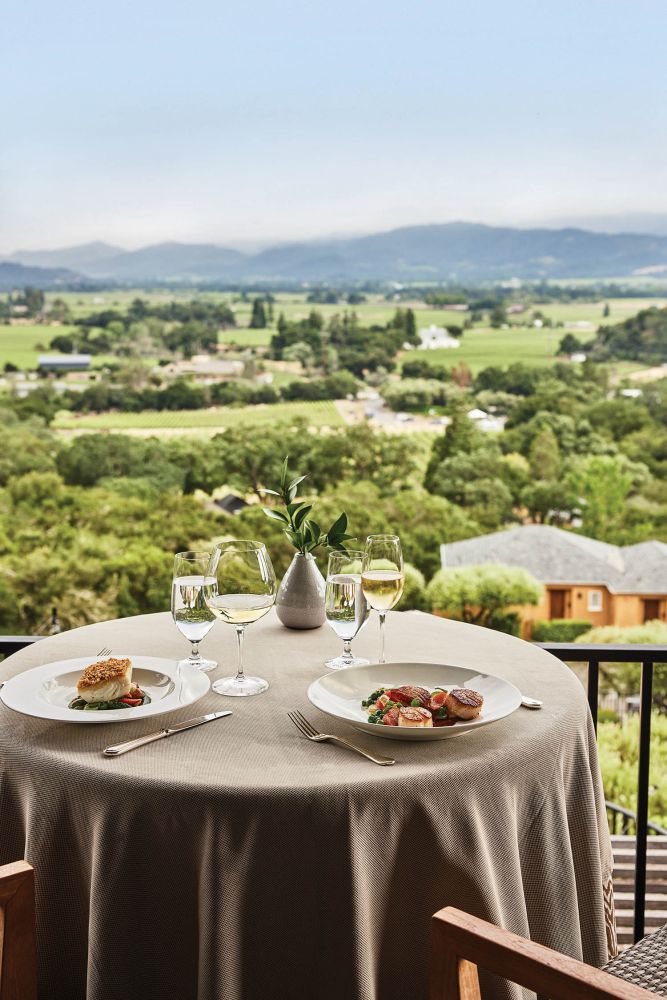
One of photographer Sam Stapleton’s techniques is to invert the luminosity of an image in postproduction, which shifts the ice to black, as in Aster.
At his home in Knoxville, Tennessee, Sam Stapleton reaches into the freezer and pulls out a piece of Pyrex. He bypasses the oven and heads toward a spot near the kitchen’s bay window, where he sets the baking dish atop a photography light box before stepping away to await the first signs of a thaw.
This is no casserole intended for the evening’s dinner, but instead several inches of ice that, as it melts, will reveal and unfurl an iris, a morning glory, or whatever flower Stapleton has selected, prepped, and frozen for today’s endeavor. He picks up his camera and starts to shoot, first framing the flower as a portrait before zooming in to find compositions and details of interest. Those could be the curve of a stem, bubbles or fissures in the ice, graphic lines in a leaf’s veins, or the way a petal’s color bleeds into the water.
— Sam Stapleton

Morning Glory is one of many captivating images in art photographer Sam Stapleton’s book, Stilled Life (Bloodroot Mountain Press).

Daylily illustrates Stapleton’s fascination not only with the flower’s form and color, but also with the intricacies and imperfections in the ice itself.
For many years, Stapleton says, he was “deaf to the story of flowers,” but one could conclude there’s always been something in the water that inspired his artistic leanings. While he was growing up in Kingsport, Tennessee, Stapleton’s father worked at the chemical company Tennessee Eastman, a division of photography behemoth Eastman Kodak. He remembers tagging along on occasion to one of the employee darkrooms to develop film with his dad. “I can’t say I found the experience particularly fascinating, but I’m sure the early exposure influenced me on some level,” he says.

Stapleton uses flowers “just as an artist might use a variety of paints and brushes to achieve different effects in their work.” Pictured: Daffodil

“My flowers are the raw materials I use to create the effects of beauty I seek.” Pictured: Tulip
Although it would be a long time before he pursued photography as fine art, cameras became frequent companions along his journey through life’s stages. In his 20s, that often entailed taking a 35 mm Pentax to hard-rock concerts such as KISS, Alice Cooper, and ZZ Top, where “the big hair and colored lights produced some pretty energetic effects,” he says, with a laugh. After settling down in his 30s, he and his wife, freelance writer Patricia Hudson, collaborated on architecture and landscape stories, traveling on assignment for books and magazines until he mostly put photography aside for a couple of decades—with the exception of a family portrait now and then—to focus on a job in healthcare finance and raising the couple’s two daughters.

Sometimes Stapleton flips the ice over to shoot the blossom’s back side for another perspective, as in Rose. He also explores multiple exposures and finds reward in flowers past their prime.

Magnolia is one of the most challenging flowers to photograph because it turns brown quickly in water, he says, but the results are no less beautiful.
Even now, after a number of successful exhibitions and a recently published book of his images (Stilled Life, Bloodroot Mountain Press, 2018), the photographer continues to tweak his method. Although the subject matter may be much quieter than the heavy-metal ones of his youth, Stapleton’s eyes and ears have opened wide to flowers, as he takes what by nature is ephemeral and freezes a moment in time, telling its mesmerizing story through his lens.
— Sam Stapleton

Photographer Sam Stapleton in his element. Portrait by Roxanne Bouche Overton
By Karen Carroll | Photography by Sam Stapleton
Featured Book: Stilled Life by Sam Stapleton (Bloodroot Mountain Press, 2018)





